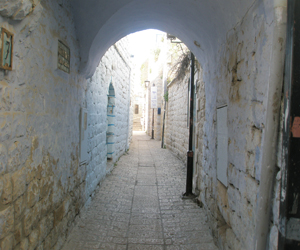The History Of The Book Of Splendor
The Book of Splendor, known in Hebrew as the Zohar, is the main text around which kabbalistic, or Jewish mystical study revolves. The Zohar was written by Rabbi Shimon Bar Yochai, also known by his acronym, the Rashbi. The Rashbi lived during the Roman occupation of Israel.
Roman Occupation
The Roman occupation was a difficult test of endurance for religious Jews, since the Romans were bent on executing Torah scholars. The Rashbi's mentor, Rabbi Akiva, was a Jewish martyr who died at the hands of the Roman occupier. Word came to the Rashbi that his life was in danger. In order to flee Roman religious persecution, he and his son Elazar fled to a cave, where they lived in hiding for thirteen years.
According to Jewish tradition, the Rashbi was given Divine Inspiration during his sojourn in the cave, and as a result, he was able to write the book held as sacred by so many: the Zohar.
Deeper Meaning
The Zohar expounds on the five books of Moses and is written in Aramaic. The work attempts to find a deeper meaning within the biblical text. While the Zohar is not the oldest kabbalistic work, it is considered to be the most comprehensive of the mystical writings. Most of the later kabbalistic authorities based their writings upon the Zohar, including the famed kabbalist, Isaac Luria, who was known by the acronym: Arizal.
The Zohar was not given broad attention until the 13th century. Until that time, only a few individuals were allowed to study its secrets. In the 13th century, the Zohar was published by Rabbi Moses de Leon, a leading kabbalist in Spain. There is a tradition that Nachmanides, who lived from around 1194-1270, and was also a renowned kabbalist, entrusted the Zohar to his son, who was traveling by ship from Israel to Catalonia. Somehow the ship was diverted and the Zohar landed in the hands of de Leon.
Secret Vault
Some have the tradition that the Zohar was hidden in a secret vault for one thousand years. The manuscript was discovered by an Arabian king who had no idea what the text revealed. The king sent the manuscript to Toledo to be deciphered.
Another version of the Zohar's meanderings has it that the Spanish conquistadors found the manuscript of the Zohar mixed in with a great many other manuscripts in an academy situated in Heidelberg. No matter which tale is the one which holds the truth, the authenticity of the text has never been in question.

